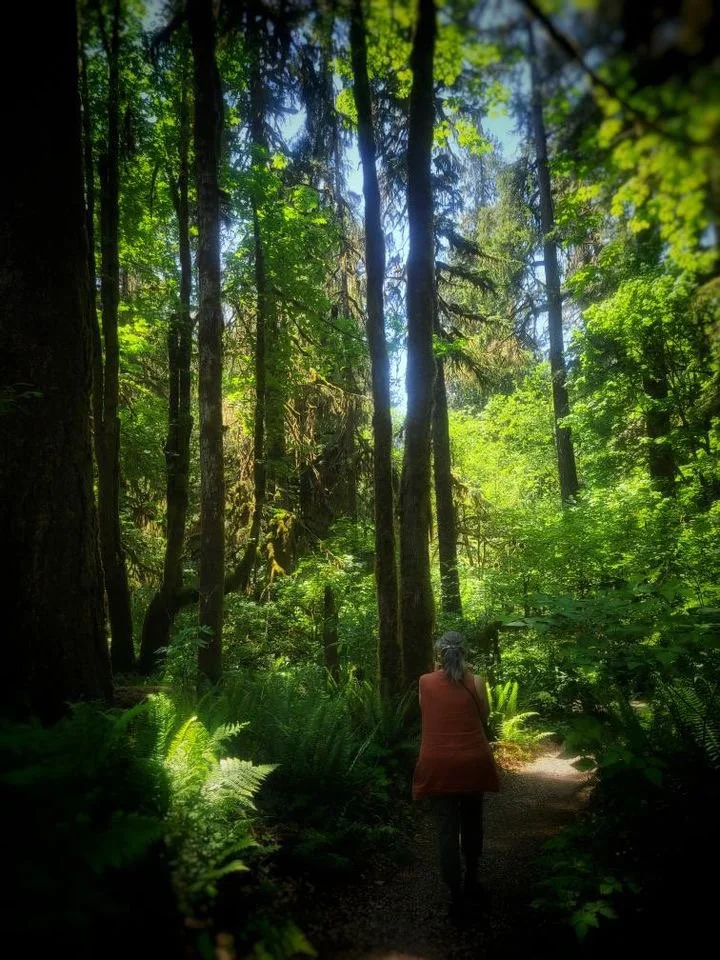Feral Foods of Spring
/This is an invitation to integrate wild plants into your daily diet. Wild, edible plants are the foods of our ancestors and they are calling. Not sure how to integrate them into your diet? Just add them to whatever you are eating!
Having scrambled eggs? Add some nettle. Mac and cheese? Nettles are great here, too…or how about adding some lambs quarters? Making your favorite wrap, taco, or sandwich? Add some chickweed and dandelion greens for added crunch and flavor.
What’s up with the wild plants of Spring? Inquiring foragers want to know. Here are a few feral foods to know for spring.
Chickweed
Stellaria media
Chickweed is easiest to integrate into your meals if you are accustomed to the blander taste profile of modern purchased greens. If you love Iceberg lettuce and cannot tolerate Arugula or Kale, start with Chickweed. Crunchy and mild with a rich, earthy flavor, it is a great addition to or substitution for fresh greens. Add to salads, wraps, or even smoothies.
When foraging, look for Chickweed in gardens, cultivated land, meadows, and woodland. It has a prostrate or creeping habit with opposite short stalked leaves. The leaves are different shapes in growth with marginal hairs on the leaf base and leaf stem of the egg to spade shaped leaves. Look for a tangled mat of leaves on trailing stems even growing up light poles and on street curbs!
It is high in Vitamin C, Beta Carotene and the minerals Iron, Calcium, Magnesium, potassium and Manganese. People with debilitated conditions, anemia, or malnourishment will often feel nourished and rejuvenated with additions of chickweed in their diets.
Careful additions of chickweed help constipation, but too much chickweed can cause cramping and/or diarrhea. So start slow with chickweed if symptoms show up.
Nettle
Urtica dioica
Nettles is such a great plant friend that foragers frequently text their foraging friends when they first see nettle appear in their harvest sites. Instagram explodes with people rejoicing in their site. There certainly must be a hashtag for this celebration!
New, young nettle shoots are the best for food. Nettles superfood credentials come from it’s reputation for nutrients supreme. Iron, magnesium calcium, Vitamins A,C,K,B, among acids, fibre and has one of the highest concentration of plant proteins available.
Nettle is a rejuvenating tonic that brings you back to life after a long winter in the PNW. Its high protein and iron content is nourishing while its building of adrenal health is energizing. Nettle can be drying due to its drying energy and diuretic effect so if you have a tendency toward dry conditions, use nettle sparingly or add chickweed to your diet to balance out the dryness.
Dandelion
Past Trillium Medicine students with Taraxacum officianale
Dandelion Greens are loaded with essential vitamins and minerals. I remember being introduced to the value of dandelions greens at a herb conference in the late 90’s. The teacher told us that if we wanted to eliminate our multivitamin tablet, all we would need to do is add one dandelion leaf per day. Wow! Just think what a handful a day would do for our body?
Dandelion’s bitter taste helps us digest our food. Having good digestion is key to being able to assimilate all that good, healthy foods have to offer us. Our mood is directly related to our digestion, so double up on Dandelion to keep your mental health stable and your moods at an even keel.
Dandelion is an early Spring bloomer and will help you identify the true dandelion over a few lookalikes. Watch for one flower per stem on the dandelion plant to help assure proper ID.
Lambs Quarters
Chenopodium album
Lambs Quarters is an annual edible weed found in gardens, cultivated areas, disturbed soils, and vacant lots around here in the the Pacific Northwest. All above ground parts are edible when tender from early Spring to Fall. A member of the Large Amaranth family, which includes quinoa, beets, chard and spinach, Lambs Quarters is cultivated in many areas of the world as a nutrient rich vegetable. It is a favorite with foragers for its mild, spinach-like taste, and is a good choice for the wild food kitchen.
The diamond-shaped leaves are green but sometimes may appear tinged with red. Lambs quarter also has a dusty white powder on the stem and undersides.
The plant is very nutritious and high in Iron, Calcium, and Beta Carotene, vitamin A and C and is a good source of plant-based protein.
Lambs Quarters is easy to prepare with no need to cook or parboil for hours prior to eating. Tender, new leaves of the plant can be eaten raw or in dressings and dips, soups or as a potherb.
Want to learn more about Wild Foods? Sign up for the Integrated Plant Medicine Immersion starting April 8. Click here for more information.




